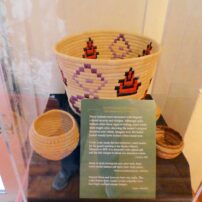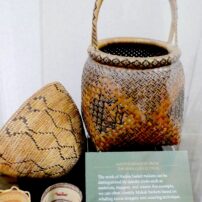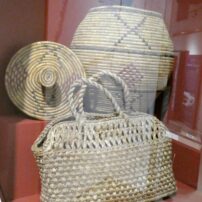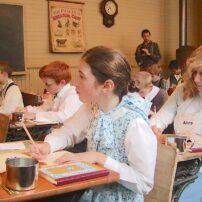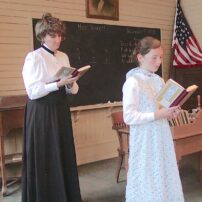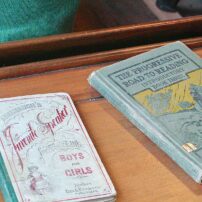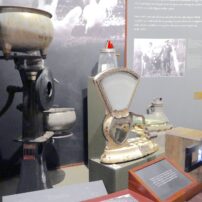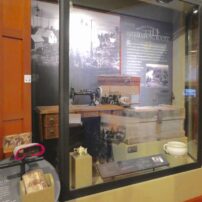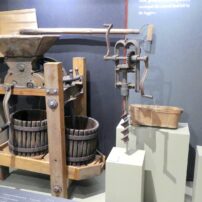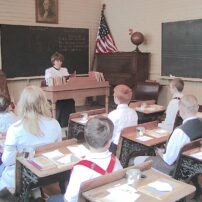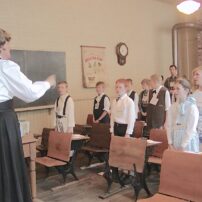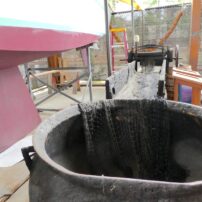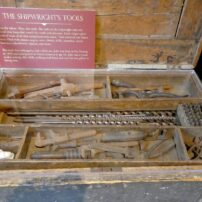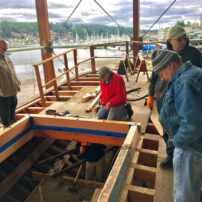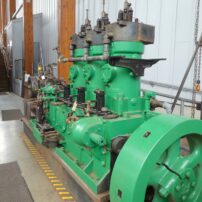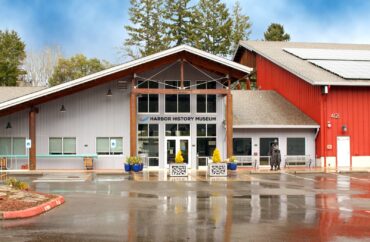 Much of Gig Harbor’s history is written in fish.
Much of Gig Harbor’s history is written in fish.
For centuries before white settlers arrived, Native Americans had a village on Gig Harbor Bay, near today’s Austin Estuary and Donkey Creek. They were the sxw babš band (pronounced sk-WHUH-babsh) or “swift water” people of the Puyallup Tribe of Indians and they called their village tuwaw †q† (pronounced twah-well-kax) — meaning “jack salmon” or “trout.”
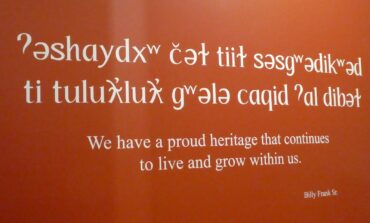
In the 1860s, immigrants from Croatia and Italy learned about the abundance of fish in the area and made their way there, bringing with them their fishing culture, boatbuilding skills and winemaking tradition.
Other immigrants, including those of Scandinavian descent, brought farming and other traditions.
Today, the Harbor History Museum is the guardian of hundreds of artifacts from those early days — from native baskets and tools, to everyday items used by early pioneer families, to objects that reflect the town’s Croatian and Italian fishing culture. The objects tell the stories of the town’s rich history and reflect the lives of the many generations who have called Gig Harbor home.
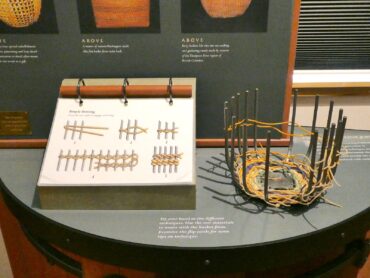
“We have a really interesting collection — from a tiny World War II button to a 65-foot purse seiner, to the town’s first schoolhouse,” said Executive Director Stephanie Lile.
“Our mission is to collect, preserve and share the history and the stories of the greater Gig Harbor area and to show how we’re all interconnected,” she said.
There are also quirky things like the collection of round rocks, old bottle cappers and presses from the days when the Croatian families made their own wine, and the very first Thunderbird sailboat that Ed Hoppen designed and built in the 1950s in the town’s Eddon boat shop.
Native-made baskets
There are also twisted, rusty chunks of iron from “Galloping Gertie” — the original Tacoma Narrows Bridge — and beautiful items like handmade quilts.
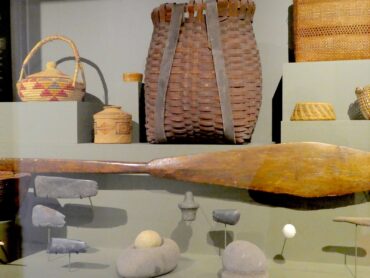
Lile likes to call the museum “a library of things.” Every artifact tells a story that is intrinsically tied to Gig Harbor, she said.
Simple Beginnings
The seed for today’s museum was planted around 1964, when a group of residents started getting together to study local history. The group became known as the Gig Harbor Peninsula Historical Society and was incorporated as a nonprofit in 1976.
As the Society’s collection of historical items grew, more and more space was needed to store and display the objects. For several years, the organization made its home in an old log cabin adjacent to the city’s wastewater treatment plant.
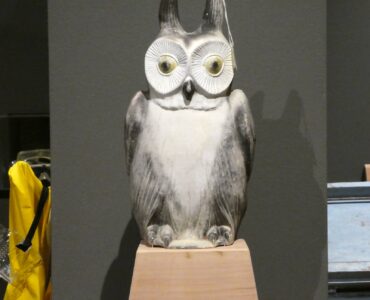
In 2010, the museum moved to its current location on the waterfront between Donkey Creek and Austin Estuary.
Even the museum’s site on the shore of Gig Harbor Bay has a history.
In the distant past, it was a gathering place for Native Americans who hosted potlatches in a cedar hut. Later, the hut was used as a school building where white and Native children studied together.
The hut was replaced by a much larger structure that, among other things, functioned as a dance studio until Peninsula Light Co. purchased it. In the late 1940s, PenLight added a large garage to the site.
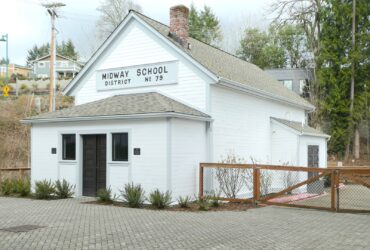
Still later, the site was a popular garden center until Peninsula Historical Society purchased it in 2004. In September 2010, the museum officially opened its doors. But even as work was being done on the new museum, the 65-foot Shenandoah and the century-old Midway Schoolhouse were moved to the site in October 2008 and April 2009, respectively.
Pioneer School Experience
The school is now the site of one of the museum’s most popular “living history” programs — the Pioneer School Experience — that re-creates a typical day at Midway School in 1901. Longtime museum volunteer Leann O’Neill developed the program and plays schoolmarm Miss Abigail Bennett.
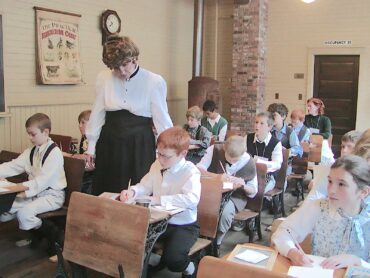
Schools throughout the Peninsula School District can participate in the Pioneer School Experience. Students are encouraged to dress in 1901-style clothing and bring lunches similar to those eaten by students of that era. During their pioneer school day, students study reading, spelling, penmanship and arithmetic; sing old-time songs and play long-forgotten games outdoors during recess.
The schoolhouse was built in 1893 in the Artondale neighborhood and was called “District 79” until students petitioned to have a new name for the school. They chose “Midway” to reflect the building’s location midway between Gig Harbor and Point Fosdick.
Midway School closed its doors in 1941 and then became a storage shed and woodshop. Alice Murphy Doyle donated the building to the Historical Society in 2004, and the organization moved it to the permanent location behind the museum five years later. Everything in the schoolhouse is period-appropriate, and many items come from the original school and other early Gig Harbor-area schools.
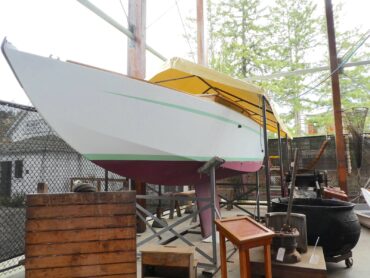
Boats, Boats and More Boats
Significant space at the museum is devoted to the area’s maritime history. The most-impressive object in the collection is the 65-foot purse seiner Shenandoah, donated by the Janovich family.
The boat was built in Gig Harbor in 1925 for Pasco Dorotich and his business partner, Nick Bez. Both had immigrated from Croatia. Dorotich used the boat as a tender in Alaska, ferrying barges of salmon to Bez’s cannery in Todd. Then, as times and commercial fishing technology changed, so did the Shenandoah.
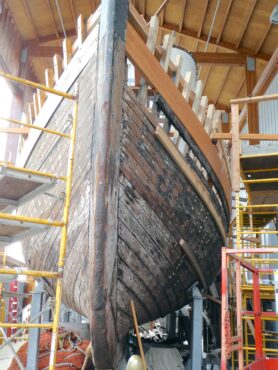
“Here’s the thing with old boats,” Lile said. “They’re often a compilation of work from different times, because the fishing industry evolved, so the fishermen — and their boats — had to adapt. Shenandoah was first a tender, then a hand-hauled seiner, then a power block seiner, then a drum roller seiner.”
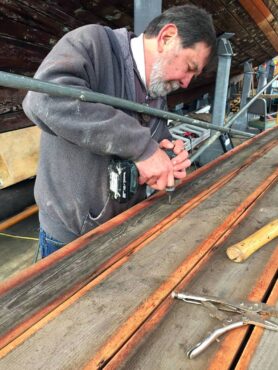 A crew of volunteers is currently restoring the boat piece by piece, and all those different fishing eras will be interpreted on the boat when they finish the work, she added.
A crew of volunteers is currently restoring the boat piece by piece, and all those different fishing eras will be interpreted on the boat when they finish the work, she added.
The restoration process is clearly visible for public viewing, and volunteers enjoy telling visitors about the project.
During the boat’s restoration, the volunteer crew has discovered many interesting artifacts buried in rotten decking and hidden between planks. These “hidden treasures” are on display in the museum’s Maritime Gallery.
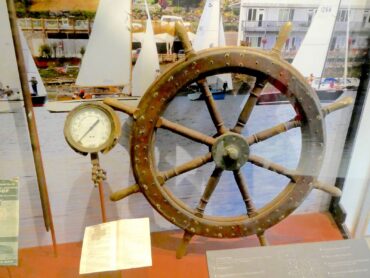
The museum is also the proud owner of the first Thunderbird sailboat ever built. Ed Hoppen designed and constructed it from plywood at the nearby Eddon BoatShop in response to a contest sponsored by the Plywood Association to build an inexpensive, do-it-yourself sailing craft. Several thousand Thunderbird build-it-yourself kits were sold and many of those homemade boats are still in use.
And since boats were the main means of transportation between Peninsula communities and to Tacoma, the museum’s collection also includes several well-used rowboats and skiffs, as well as many references to the early ferryboats and the historic “Mosquito Fleet.”
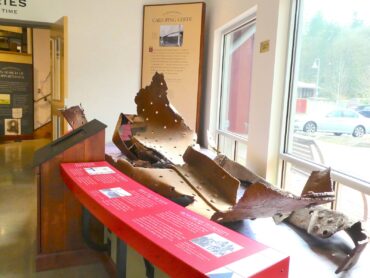
There’s also a collection of tools used by shipwrights of old, and a display of objects used by local fishermen to care for their nets, like a huge tar pot and a wringer — similar to a wringer on an old-fashioned washing machine — used for tarring the nets every year. Then, the tarred nets were laid out to dry in the fishermen’s backyards and longtime residents recall the smell of tar in the warm springtime air.
“It was hot, messy work, but it’s how they preserved their cotton nets,” Lile said.
After nylon nets were introduced, the annual tarring process ended.
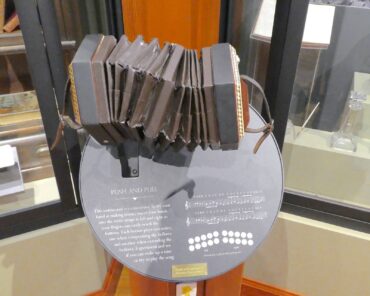
Interactive Opportunities
As visitors wander through the museum, they have numerous opportunities to interact with the displays. They can try their skill at basket weaving, play an old concertina and see how eggs were “candled” during the area’s egg-farming heyday.
Visitors can also take a self-guided audio tour through the galleries. In addition, they can listen to recordings of conversations with longtime residents talking about bygone times.
This fall, the museum will mark its 10th anniversary in the permanent location. A birthday party is in the planning stages.
The museum is open six days a week during the summer and fall. Admission is free, thanks to a grant from the city of Gig Harbor.




